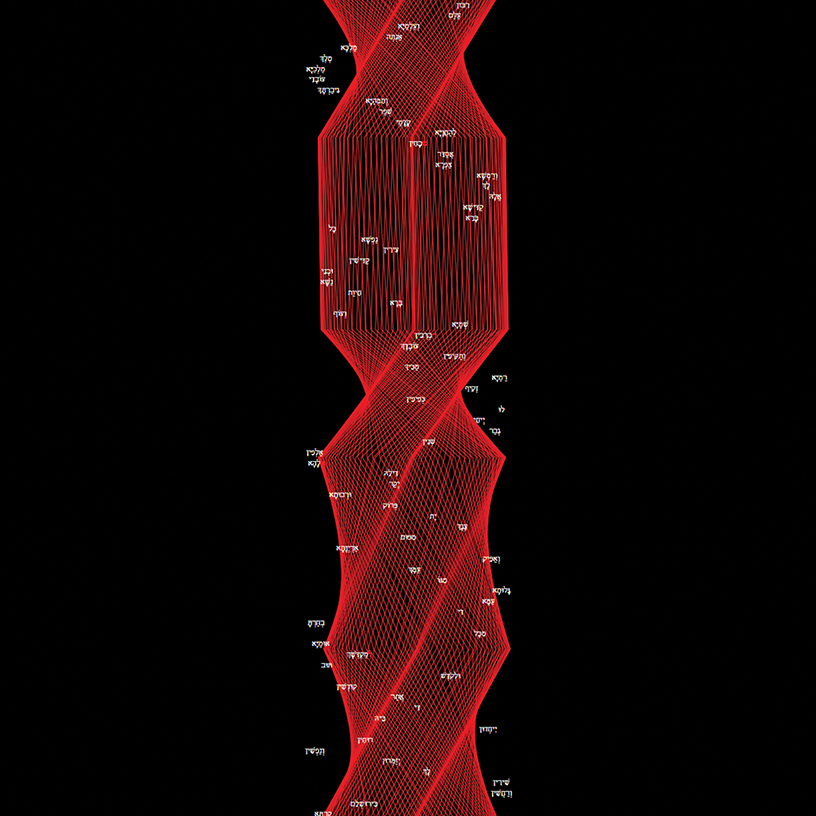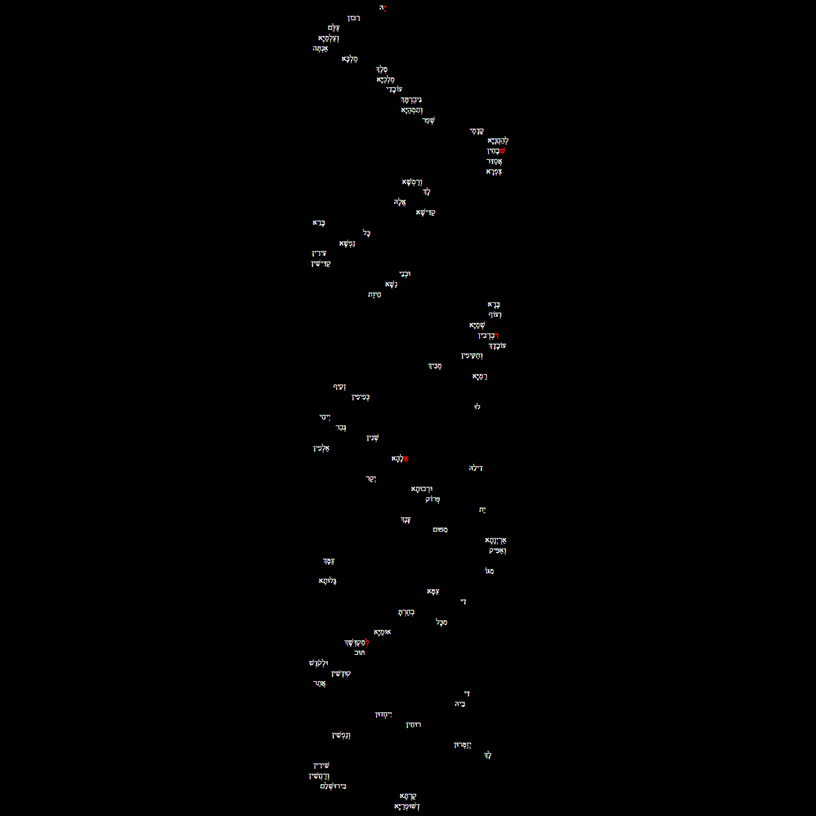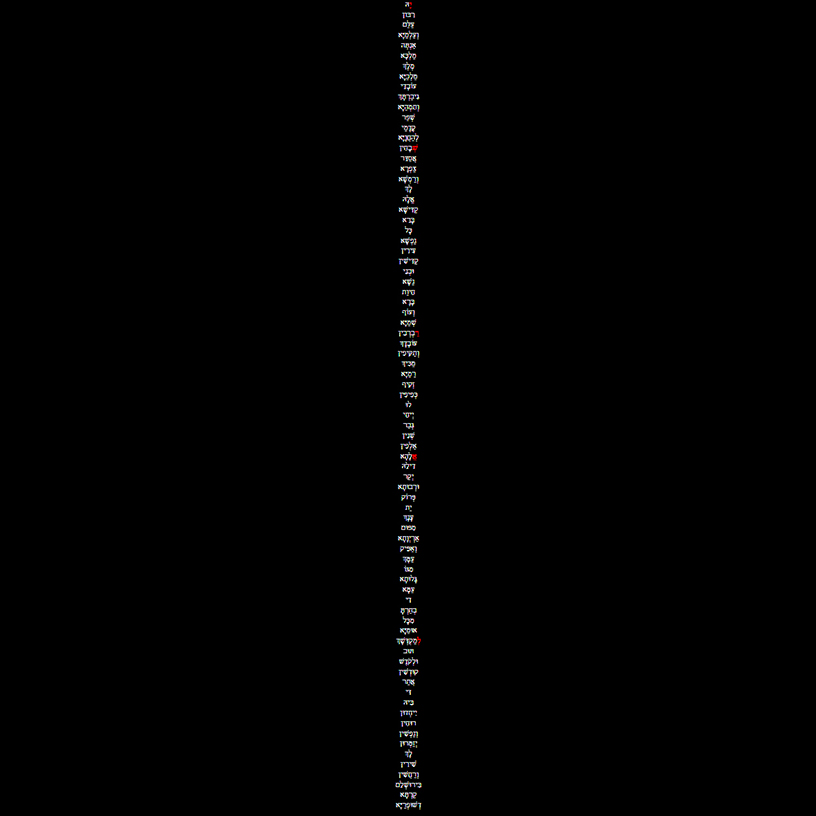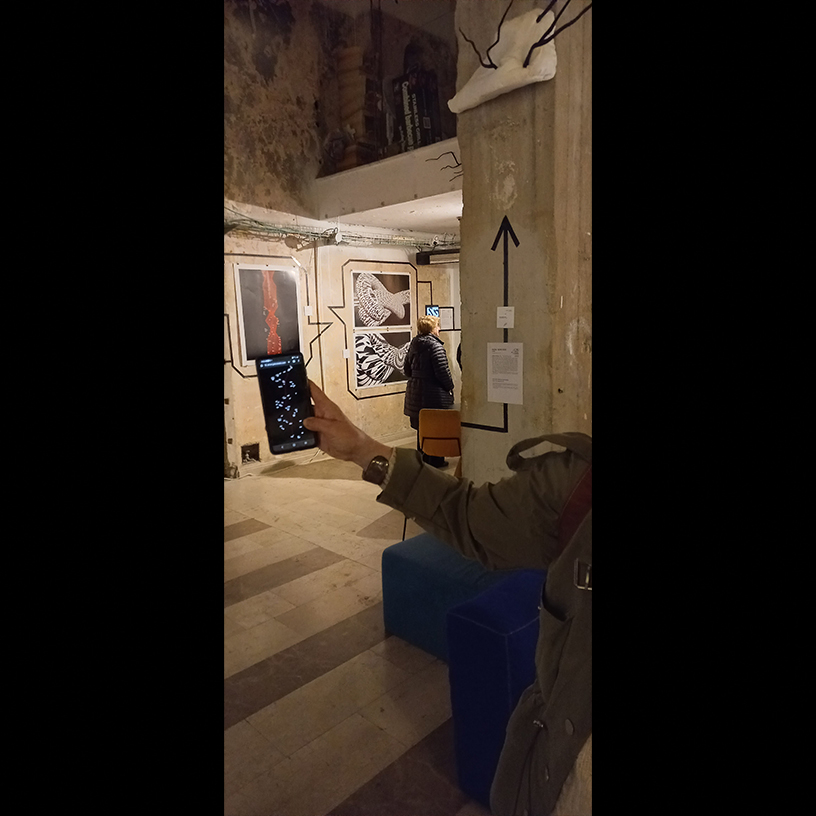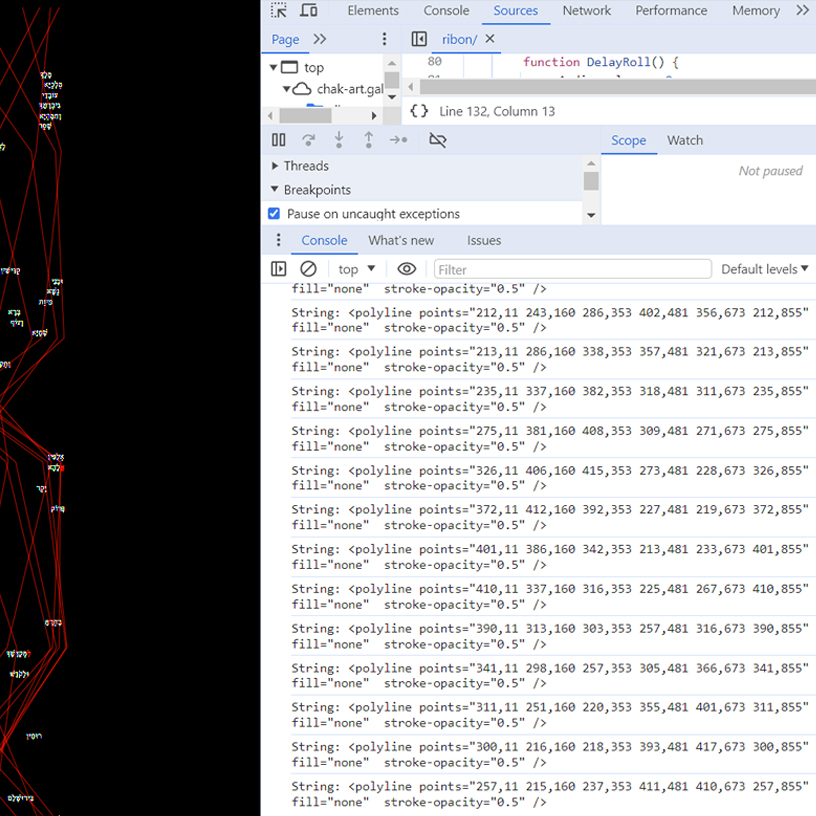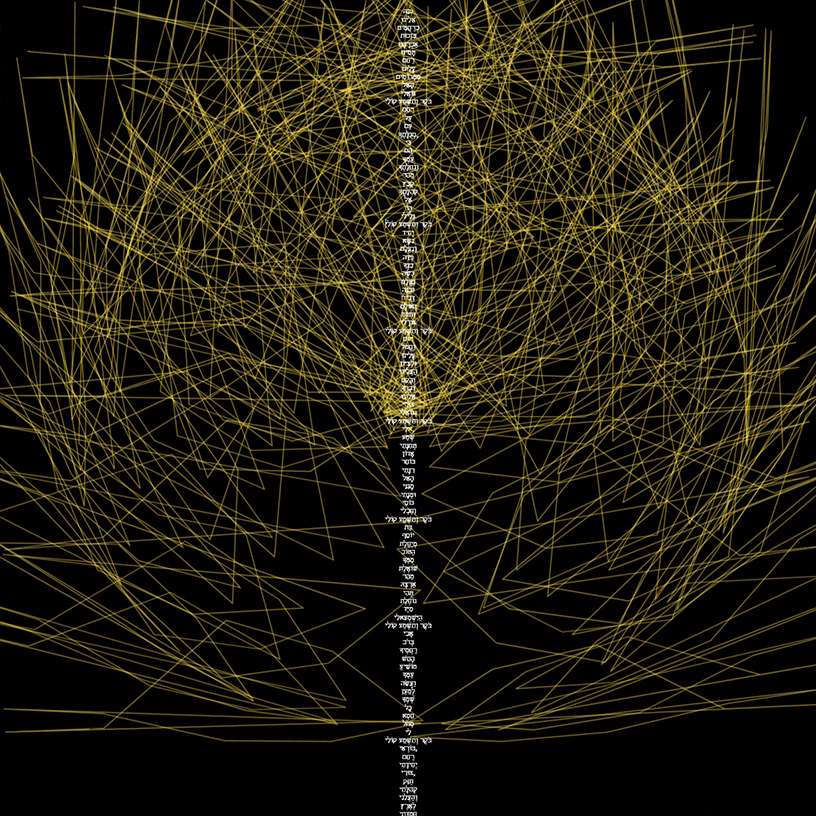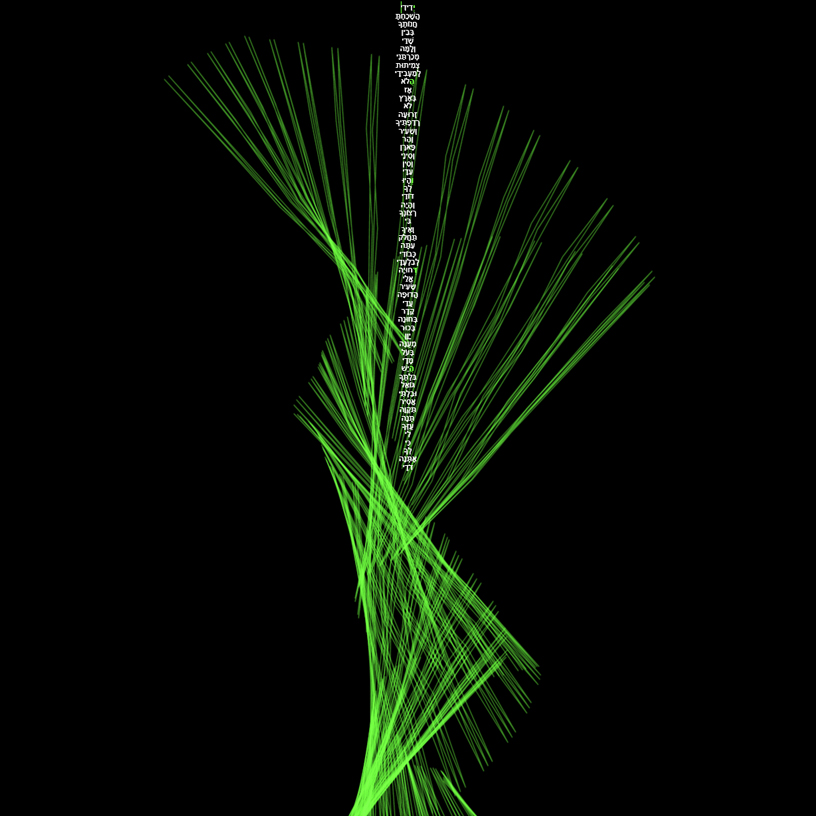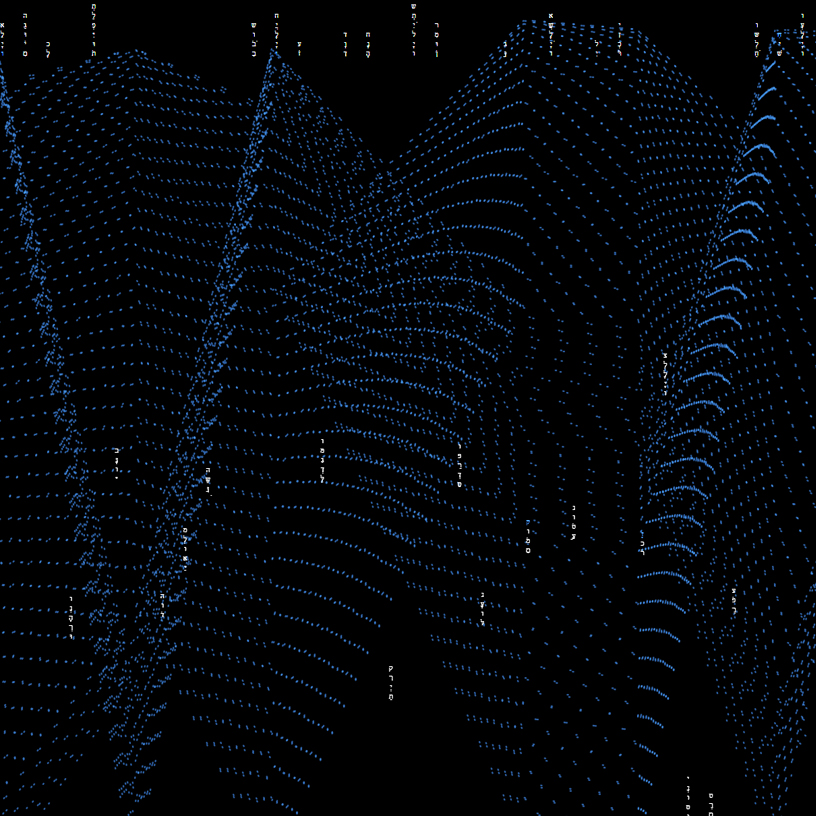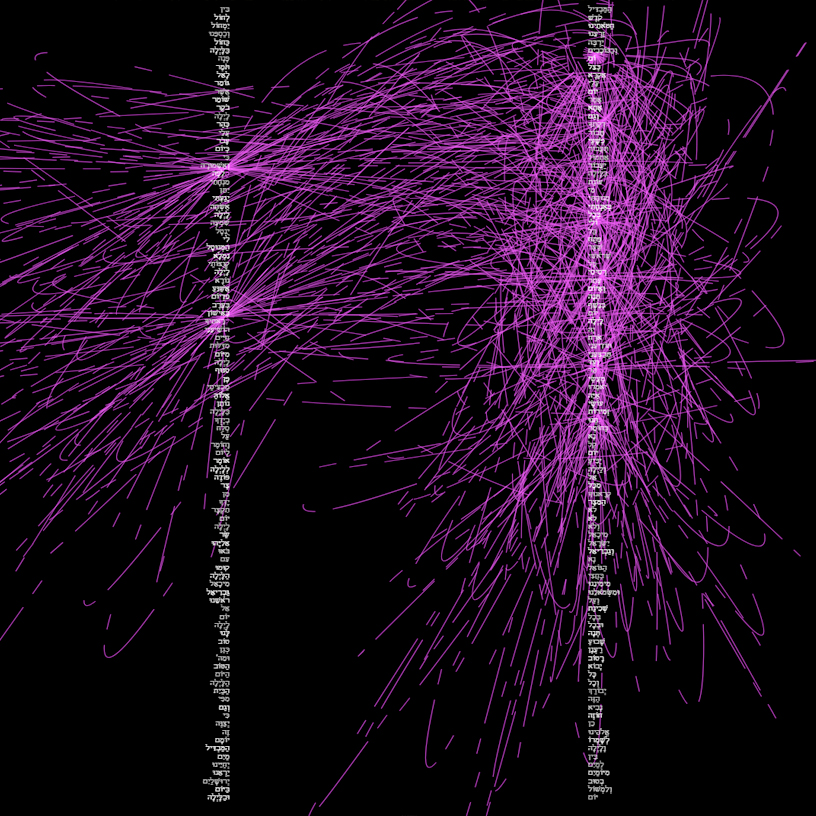PIYUT CODING Generative Art

void main(){printf("Hello, World!");}
C First lesson, "Big Blue C"
See here:
Yah Ribon Coding
Pne Aleynu Coding
Atsula Lefanim Coding
Yedidi Ha'shachachta Coding
Shifat Revivim Coding
Lekha Dodi Coding
Hamafdil Coding
I have started working on the “Piyut Coding” series in 2024. While studying ancient Jewish poetic works, I discovered a whole series of wonderful song-verses written by poets at different times in different countries of the Jewish Diaspora. Why did I combine them into a single series? It seems to me that these poems are united by a mystical and esoteric attitude towards Being. What is also common is that all poems are written according to the ACROSTICS principle. My purpose is to interpret ancient works so that they would “light up” with new colors of the modern world. That's why I chose the opportunities that Generative art provides. The movement of words creates a unique choreography for writing an ACROSTIC each time the program is launched. Thus, each animation scene exists only in a single copy. Each work is the result of code execution and does not imply the preservation of an unchanged image or video. The innovation of this project lies in the fact that it changes the roles and ideas created decades earlier in the new “coded” reality. The “artificial”, which is represented in the work by computer code, behaves like a “living” organism, changing the structure of the animation and video every time it starts. At the same time, the recording of “live” voice and music always remains unchanged. In this way, we can note a change in previously established ideas. All animation scenes are “drawn” with a specific color, which together creates a multi-colored rainbow of the work. The music reflects the diversity of ancient and modern Jewish melodies. Spectators will hear Sephardic and Ashkenazi performances of poetic works. The program for all parts was codded by Alex Chak. The musical performance of all poems is in the Public domain.
* * *
“Yah Ribon Coding” (“The Most High is the King of the World”) is based on the text of the famous Shabbat hymn of Rabbi Israel ben Moses Najara, glorifying the one Creator. Israel ben Moses Najara (c. 1555, Ottoman Empire – c. 1625, Gaza, Ottoman Empire) was a famous Jewish liturgical poet, preacher, biblical commentator, kabbalist, and subsequently rabbi of the city of Gaza. The book “Zemirot Yisrael“, originally called “Zemirot Yisrael Najara“, was first published in Safed (1587) and contained 108 piyutim and hymns. “Yah Ribon” is a famous hymn included in this book of poems. Each verse of “Yah Ribon” begins with a Hebrew letter forming the acrostic word ISRAEL. The red strings in the video connect the letters of the ACROSTICS and “draw” a complex graphic system reminiscent of transparent crystals. The red color for the strings was chosen according to ancient Jewish tradition as a symbol of strength and heroism.
* * *
“Pne Aleynu Coding“ (“Show us your mercy”) is based on the text of the famous piyut Frecha Bat Yosef. Frecha Bat Yosef (also known as Frecha Bat Rabbi Abraham) was an 18th-century poet. She was born in Morocco, moved with her family to Algeria and then to Tunisia. Freha is unique for her time as a woman poet. Her poetry intertwines the personal destiny and history of the people of Israel: the history of exile and the desire for redemption. Since the publication of Professor Yosef Sheetrit, who discovered her magnificent poetry, Freha Bat Yosef's work has become a source of inspiration for poets, artists and musicians. The hymn “Pne Aleynu” is a request to the Almighty for the unification of the Jewish people. Each verse of this hymn begins with a Hebrew letter forming an ACROSTIC – the word of FRECHA. Orange polyhedrons connect the letters ACROSTIC and “draw” a complex graphic system reminiscent of a rising sun or a dandelion flower, inside of which there is an endless cave-tunnel.
* * *
“Atsula Lefanim Coding“ (“True Nobility”) is based on the text of the famous poem by Rabbi Abraham ben Ezra. Abraham ben Ezra (1092, Tudela, Taifa of Zaragoza – 1167, Calahorra, Kingdom of Navarre) was a famous scientist, philosopher and rabbi who was one of the founders of Hebrew grammar. The first two verses of the hymn “Atsula Lefanim” praise the Torah, and the subsequent ones bless the “bridegroom of the Torah” – the reader who has the honor of reading its last section, completing the cycle of reading the Torah for this year. “Atsula Lefanim” by Abraham ben Ezra was recorded by Yemenite Jews in the prayer book "Tachalal". The song is performed at night on the holidays of Shavuot and Simchat Torah. "Atsula Lefanim" refers to the type of "nashid" – one of the types of piyut in the Yemenite Jewish tradition, built on the principles of classical Arabic kacida. Each verse of this hymn begins with a Hebrew letter forming an ACROSTIC – the word ABRAHAM. Yellow lines connect the letters ACROSTIC and “draw” a complex graphic system reminiscent desert landscape.
* * *
“Yedidi Ha׳shachachta Coding“ (“My love, have you forgotten”) is based on the text of famous poem by Rabbi Yehuda Halevi. Yehuda ben Shmuel Halevi (c. 1075, Tudela, Spain – 1141, Jerusalem) was a famous medieval Jewish poet and philosopher. “Yedidi Ha׳shachachta“ is one of the central hymns in the tradition of Jews from the communities of Aram Tzuba, Iraq and Morocco. It is performed on the seventh day of Passover, on Saturday evening and weddings. “Yedidi Ha׳shachachta” is characterized by sensual and erotic descriptions of love relationships. Scholars and Torah commentators argue that, like the descriptions of love in the Book of Songs. An allegory of the text describes the relationship between the Creator and the people of Israel. Each verse of this hymn begins with a Hebrew letter forming an ACROSTIC – the word YEHUDAH. Green color in Jewish tradition is a symbol of fertility, renewal and femininity. The green polyhedrons in the video connect the letters of the ACROSTICS and “draw” a complex graphic system that resembles a growing fantastic tree.
* * *
“Shifat Revivim Coding” (“Abundance of Rainfall”) is based on the text of Ibn Gvirol’s famous poem from the book “Tikkun HaGeshem”. Rabbi Shlomo Ben-Yehuda ibn Gabirol, also known as Ibn Gabirol, was a Spanish-Jewish philosopher and poet who lived in the 11th century (1021, Malaga, Spain – 1058). Tikkun HaGeshem (c. 1040) is one of his books of poetry. This collection of poems is part of Ibn Gabirol's wider oeuvre, which includes philosophical treatises, religious poetry and writings on ethics. “Tikkun HaGeshem“ is especially known for its spiritual and mystical themes, often exploring the relationship between humanity and the divine. In Ibn Gvirol's hymn “Shifat Revivim“, streams of rain are a symbol of salvation. Each verse of this hymn begins with a Hebrew letter forming an acrostic – the words SHLOMO CHAZAK (SOLOMON THE MIGHTY). The blue streams in the video connect the letters of the ACROSTICS and “draw” a complex graphic system reminiscent of falling rain.
* * *
“Lekha Dodi Coding“ (“Let us go, my beloved”) is based on the text of famous hymn by Shlomo Halevi Alkabetz. The poet and kabbalist Shlomo Halevi, who lived in Turkey and Land of Israel in the 16th century (about 1505, Thessaloniki – about 1584, Safed) was born into a family of Jews expelled from Spain. The hymn “Lekha Dodi” is dedicated to the meeting of Saturday. The poem is based on lines from the Talmud: Rabbi Hanina... on the eve of the Sabbath said: “Let us go to meet the Queen Sabbath.” Rabbi Yanai put on Shabbat clothes and said: “come bride, come bride.” The Sabbath in the hymn is represented by the bride. The anthem expresses the suffering of the Jewish people in exile, longing and hope for speedy deliverance. “Lekha Dodi” is included in the prayer books of all Jewish communities and is read during prayer before the onset of the Sabbath. Each verse of this hymn begins with a Hebrew letter forming an acrostic – the words SHLOMO HALEVI. The color Royal blue in Jewish tradition is associated with wisdom and the Sabbath. The Royal blue jets in the video connect the letters of the ACROSTICS and “draw” a complex graphic system reminiscent of sea waves.
* * *
“Hamafdil Coding“ (“Distinguishing between the holy and the everyday”) is based on the text of the famous hymn of the medieval Jewish poet Isaac Ha-katan (the Younger). The years of his life and place of birth are unknown, and nothing is known about where he lived. “Hamavdil Bein Kodesh Lechol“ tells about the complex structure of the world, in which two sides simultaneously coexist – the mystical, divine and the “worldly”, everyday. Each verse of this hymn begins with a Hebrew letter forming an ACROSTIC – YITZCHAK HAKATAN. The mystical mood of the work is created using the color violet – a symbol of wisdom, maturity and higher intelligence. Violet broken lines are constantly moving, connecting the letters of the ACROSTIC and “drawing” a complex graphic system, forming a point at the top that resembles a pulsating “beacon”.
Shows:
- – COLOR 2024. Group exhibition. CICA Museum, Gyeonggi-do, South Korea.
- – Piyut Coding. Solo exhibition. The Old Sha’arei Tzedek gallery, Jerusalem, Israel. Curator: Rami Ozeri.
- – JUST SCAN ME!. Group exhibition. The Jerusalem House of Quality, Jerusalem, Israel. Curators: Galina Bleikh, Nataliya Kamenetskaya.
- – Art and Nomads: Multiple Horizons. Group exhibition. Jerusalem Biennale 2023, Jerusalem, Israel. Curators: Jungsuk Noh, Nataliya Kamenetskaya, Galina Bleikh.
